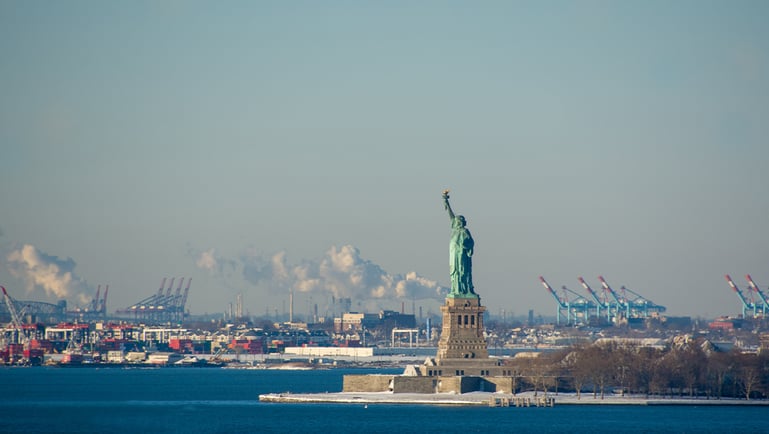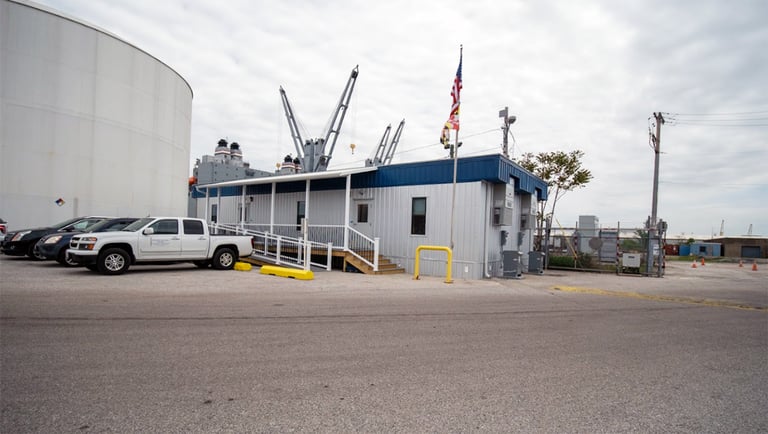With an increasing number of goods being shipped from country to country, shipping ports have been experiencing growing pains. All facets of the shipping supply chain have been affected by the pandemic as well as the increased demand for goods. Many port authorities are looking for ways to respond to rapid port growth. Here are some critical facts about the recent trends:
Fact 1: Ports Are More Congested Than Ever
Photos and videos of backed-up port entrances have been splashed across the media, and stories of ships stranded outside ports for weeks or months have scrolled across newsfeeds. Ports are dealing with an assortment of problems, leading to congestion and delays in cargo delivery. A port’s capacity is often based on the amount of land available, the number of berths and access channels, and the available cargo equipment. With the expansion of the Panama Canal paired with increasing imports and exports, ports are scrambling to accommodate larger ships and more traffic.
For example, New York and New Jersey ports are adding more bays to meet increased channel depth and width needs. In addition, the Bayonne Bridge has to be raised 65 feet to accommodate larger ships.

Fact 2: Ports are Lacking Cargo Storage Space
With the lack of available truck drivers and fewer available trucks, the cargo that makes it into the port often doesn’t have anywhere to go. Efforts to expand port hours have met with limited success due to the lack of transportation from ports to end locations. Because of this, ports are being forced to store goods until they can be moved via truck or rail. The declining quality of the nation’s infrastructure is contributing to this problem. One viable solution is to increase the amount of cargo storage space in and around ports. Providing rentable storage can be a revenue stream for ports that need additional funds. Although, with limited land availability, ports will have to get creative when it comes to expansion. They are being forced to build up instead of building out (see Fact 4 below).
Fact 3: Sustainability is the New Key Metric
Many ports face increasing pressure to meet sustainability goals, both in terms of their operations and design and construction. Port operations directly affect both the local air and water quality, but newer technologies are reducing the negative effects. In addition, ports are looking at the larger impact of their expansion plans, including how they affect natural waterways and native habitats.
Reducing carbon emissions and power usage helps ports save money on operational costs, as well as being good for the environment. Some ports are even looking at alternative energy sources, including offshore power.
Fact 4: There is Limited Land for Expansion
Over 300 commercial and inland ports in the United States need improvements to manage increased imports. Ports need to reconfigure to accommodate deeper and wider waterways, as well as two-way traffic. There is also a cry for more cargo storage space to hold containers until further transportation can be arranged. Unfortunately, many ports are limited in their expansion by the constraints of the land surrounding them. With no more room to build out, many are having to build up, constructing multi-story buildings to accommodate increased traffic.
Fact 5: Ports Are Working With Tight budgets
Budgets are always a constraint to expansion and growth. Plans to expand ports need to be developed and approved ahead of time so that money can be requested with the next budget. This makes it difficult to react to changing needs and respond quickly. In addition, traditional construction methods can be cost-prohibitive when it comes to calculating returns on investment. Many ports rely on value engineering to get the most for their money and ensure that their budgets are being used efficiently.
Modular Buildings to Support Shipping Port Expansion
Despite all the challenges above, ports can efficiently expand and modernize their operations with the strategic use of modular buildings and construction. Modular construction allows ports to build both out and up, providing single and multi-story facilities that can meet sustainability and budget goals.
Modular buildings can be designed and installed up to 50% faster than conventional construction. Once the designs have been finalized, and the building permits are issued, site improvements can be coordinated concurrently with fabrication for efficient schedule completion. Since our buildings are constructed in a controlled environment, we can mitigate weather delays and deliver them when the site is ready.
Time is money, and we specialize in speed. Modular construction can save approximately 50% to 60% in scheduled completion dates in comparison to traditional methods.
Wilmot Modular is Here for You
Our design team will collaborate with you to develop the desired interior and exterior material finishes that match the surrounding buildings’ aesthetics to the level you need.
Whether you need mobile offices, panelized systems, or custom buildings, Wilmot Modular is here to help. Our design professionals can walk you through the entire design and construction process, providing guidance as needed. Reach out to us today to get started.








